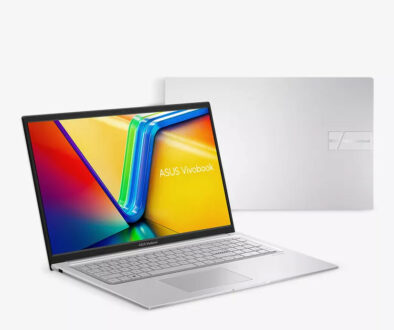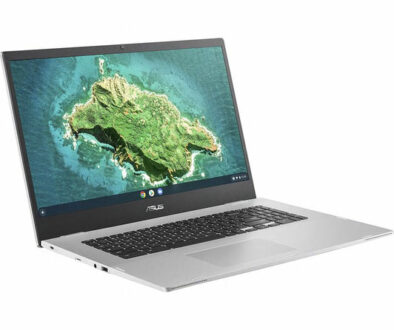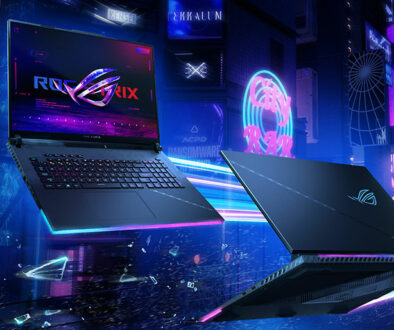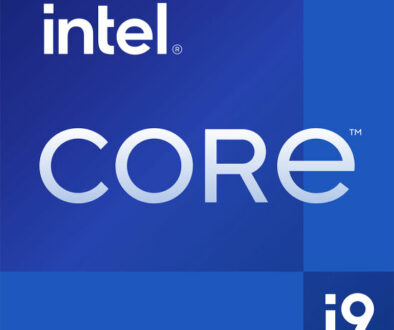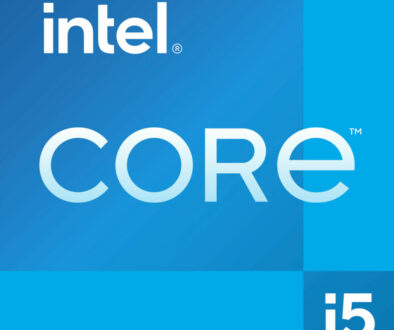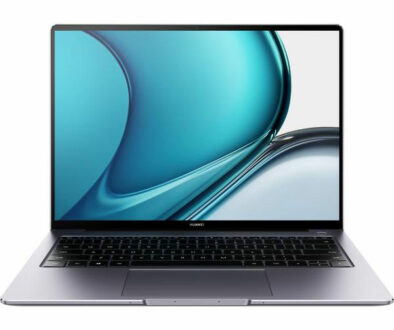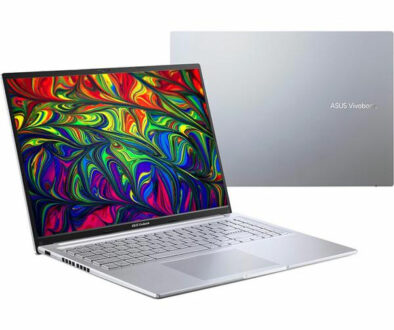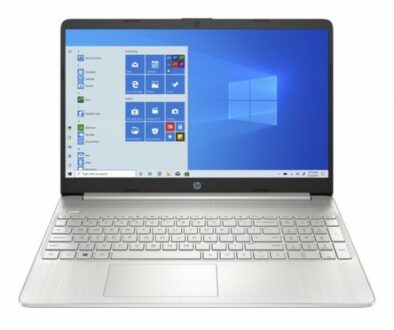The Great Potential of Apple M2 SoC That Is Getting Us All Excited
Apple’s bespoke processor, the M1, made headlines in 2020 and featured in its flagship laptops. The powerful SoC helped Apple cut out its dependency on third-party chip makers, and boy did the company rake in revenue by the millions riding on the M1’s success. Eventually, it launched the Pro, Max, and Ultra variants of the M1 chip, but geeks have been holding their breath for what’s next after the M1 chip. Come 2022 and Apple has announced the M2 chip and has since launched devices with this new chip. It has been a few of months, and the performance numbers have started to arrive.
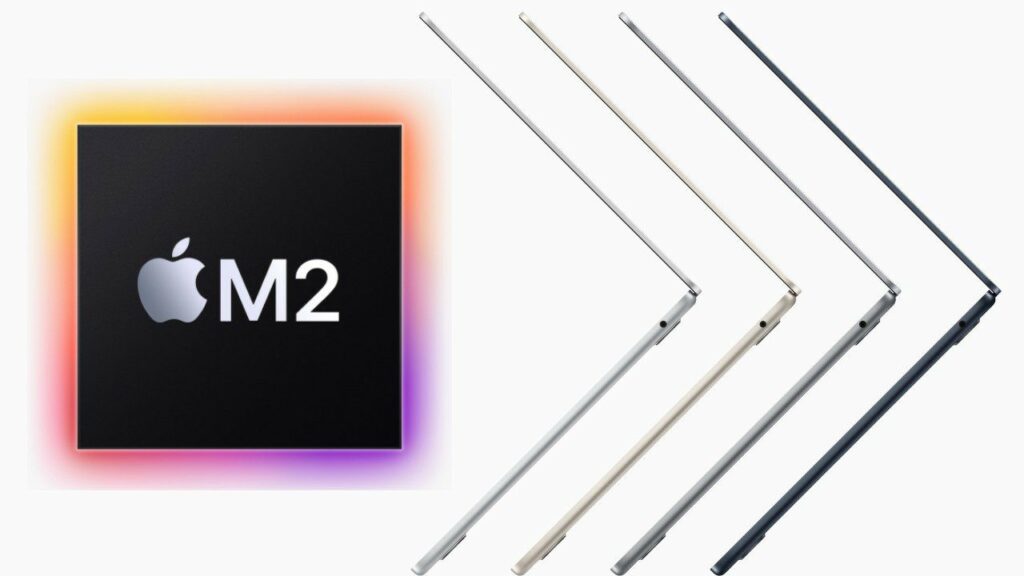
The M2 follows in the footsteps of M1 in its composition, with the CPU and GPU combined in its ARM-based SoC design. This launch has also seen Apple partner with Taiwan Semiconductor Manufacturing Company for the first time to fabricate the M2.
Today we will look at the M2 in detail and understand what it has in store for the consumers. We will compare the M2 against its predecessors, and now that Apple has cleared its intentions of transitioning away from Intel processors, we will also see how the M2 fares against Intel and AMD processors.
M2 Under the Microscope
The M2 is a second-generation ARM chip but still manufactured on TSMC’s 5-nm manufacturing process. Apple’s decision to wring more performance from the same 5-nm process has led to some frowns but there is optimism filtering from certain sections primarily because this 5-nm process uses second-generation features and improvements.
According to Apple, the M2 processor brings up to 20 percent better CPU performance and 35 percent more GPU power than the M1. The claims are bold and almost in line with the performance improvement Intel claims of its 12th Gen processors over 11th Gen.
The new processor now comes with 20 billion transistors compared to 16 in the M1 but falls quite a few leagues behind the advanced M1 chips. This leads us to believe that there is ongoing work for more powerful M2 chips. The CPU structure follows Intel’s latest separate core formations with eight cores split into hubs of two quad cores, the performance-focused Avalanche and efficiency-focused Blizzard. Aptly named, that’s all we can say right now.
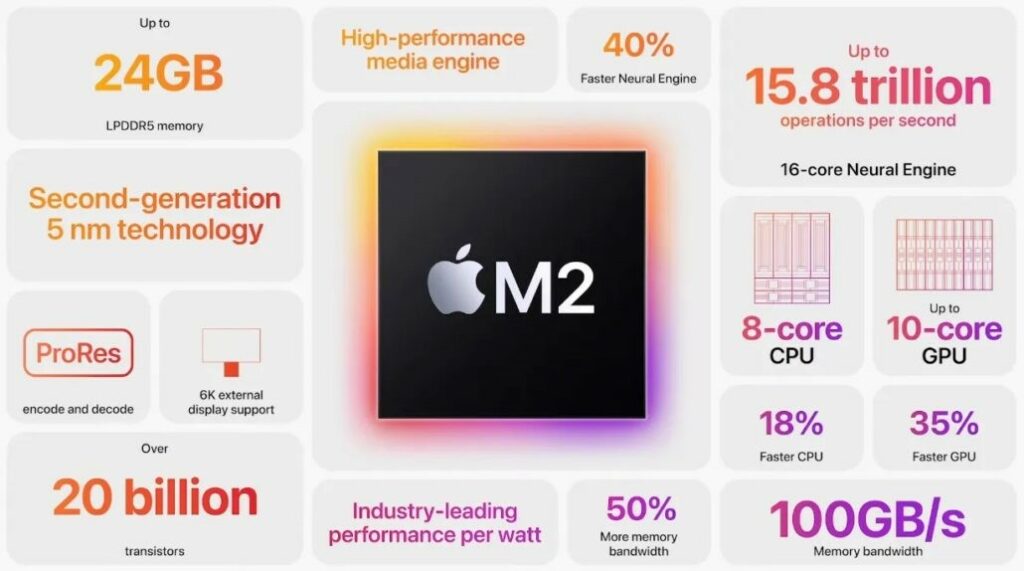
M2 has a higher speed, bigger bandwidth and more L2 cache memory
The M2 is designed for ultraportable laptops. As before, Apple introduced the new chip in the 13-inch MacBook Air and the MacBook Pro 13. The performance cores have a peak speed of 3.49GHz, while the efficiency cores have a peak speed of 2.4GHz. The improved performance is not only from the higher clock speed, it also benefits from the higher memory bandwidth on the M2. M1 had 68GB/s memory bandwidth while the M2 comes with 100GB/s bandwidth resulting in better performance for gaming and content creation. Apple has bumped up the L2 cache memory to 16MB enabling better application responsiveness and performance when the processor is already loaded with heavy tasks.
M2 has more graphics core
The GPU design has been revamped to have eight or ten GPU cores. This is more than M1’s seven or eight GPU cores. Each GPU core has thirty-eight ALUs. The higher core count results in up to 320 execution units and 2560 ALUs. This massive boost improves the TFLOPS to 3.6, up from the M1’s 2.6. In terms of clock speed, both the eight and ten-core versions have 1398 MHz clock speed, and it also benefits from the high memory bandwidth the M2 supports. In different tests, it has been confirmed that the power consumption of the GPU has not increased, implying several efficiency measures incorporated in the M2.
M2 is smarter making processes more efficient
A huge part of Apple processors is their AI processing capabilities, and the M2 builds on what the M1 introduced. The M1 had neural network hardware capable of executing 11 trillion operations per second, and the M2 can do 15.8 trillion operations with the same 16-core but improved neural processing unit.
In terms of AI data processing and machine learning, the M2’s neural core is ahead of any other processor right now. Its usage benefits include acceleration of video analysis and content creation through faster image and video processing. Faster neural cores mean passively cooled laptops like the MacBook Air will remain cool and responsive even when working on resource-intensive tasks.
M2 performance benchmark
This place the M2s with 8-core and 10-core GPU between the performance of the previous M1 chips with 7-core and 8-core GPU and the beefier Apple M1 Pro chips with massive 14-core and 16-core GPU. See performance comparison chart below. This means for the price of entry level machines, MacBook Air and MacBook Pro 13, you get performances even closer to Apple’s Pro line of chips.
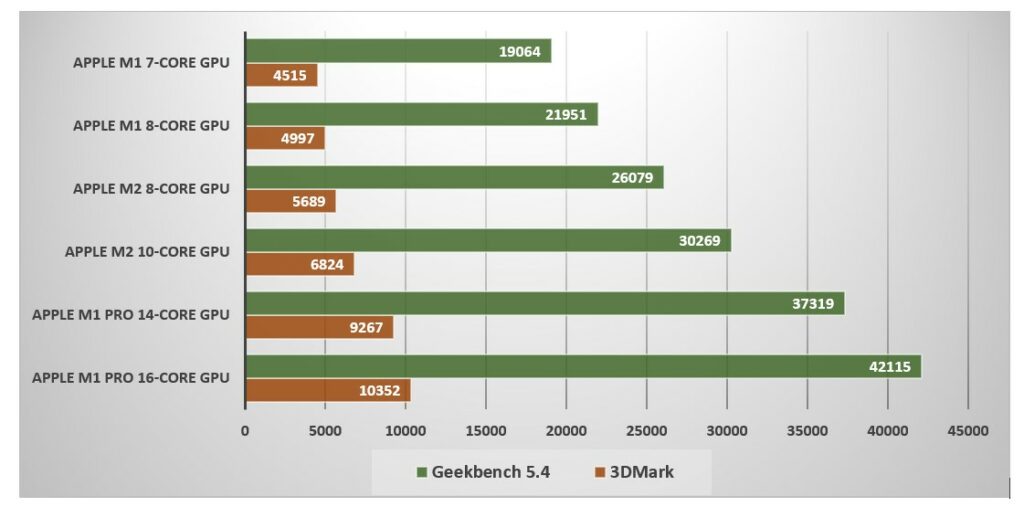
M2 has other advantages
The M2 also has a new media engine that can decode up to 8K HVEC and H.264 video. There is support for playback of multiple 4K and 8K ProRes streams. The new processor also features a unique security enclave that stores biometric data like Face ID and Touch ID. The new security enclave boots separately to the OS using a dedicated sepOS firmware. Other enhancements include a PCIe storage controller and a USB4 controller. Lastly, users are also treated with a new image signal processor for reduced noise in images.
M2 Single Core and Multicore Performance
The M2 benefits from the higher clock speed of the cores, and hence in single-core benchmarks, it betters even the best processor in Apple’s portfolio right now, the M1 Ultra. This is primarily because all the M1 processors use the same cores with the M1 clock speed. In terms of efficiency, however, the M2 gets the wooden spoon mainly because the higher mileage in single-core benchmarks comes at the cost of more power requirements. Single-core power efficiency drops by 24 percent compared to the older M1 processors.
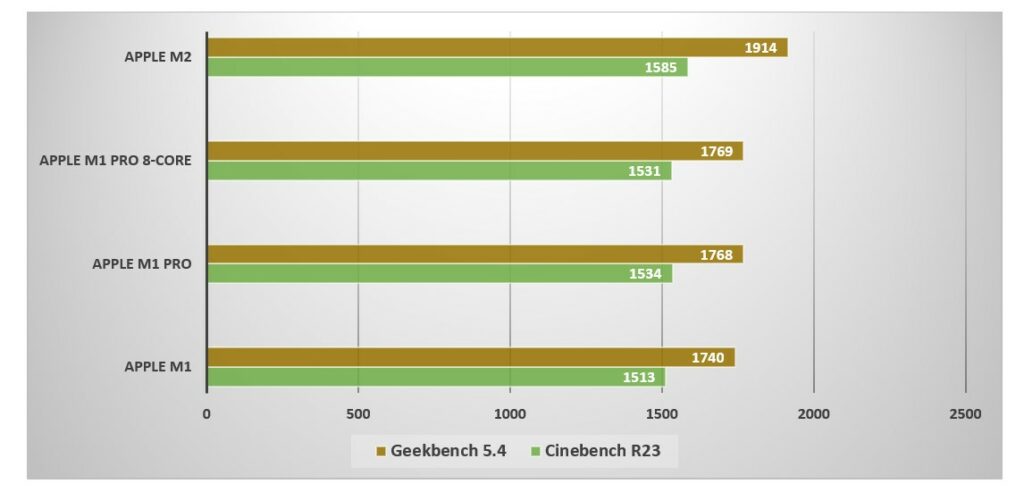
In multi-core benchmarks, the performance improvement is consistent as all the eight cores of the M2 benefit from higher clock speeds, with Geekbench 5 showing an 18 percent improvement and Cinebench R23 pegging the new processor as 15 percent faster than the M1. Efficiency drops are consistent and in line with the single core tests due to the higher wattage consumption by the higher clocked cores.
M2 vs. M1 Pro, Ultra, and Max
We know by now that the M2 is a nice improvement over the M1, but how does it fare against the more powerful M1 variants; Pro, Ultra and Max?
In terms of memory support, the M2 is better than the M1 with LPDDR5 SDRAM unified memory with a 6400 MT/s speed available in a system-in-a-package design. The available configurations are 8GB, 16GB, and 24GB, all in a 128-bit memory bus having a bandwidth of 100 GB/s. The M1 Pro has a similar speed but operates on a 256-bit bus and a memory bandwidth of 204 GB/s and comes in 16 GB and 32 GB variants.
Then there is the M1 Max that uses the same 256-bit memory bus but doubles the bandwidth of the M1 Pro at 408 GB/s and is available in 32 GB and 64 GB configurations. And, the M1 Ultra uses a 1024-bit memory bus and further doubles the memory bandwidth to 816 GB/s with 64 GB and 128 GB configurations. The memory comparison alone suggests that Apple will follow in the footsteps of the M1, and we will have more M2 processors later.
M2 vs. Intel and AMD
Apple moving away from Intel for good makes the M2 and future processors competitions for both the CPU behemoths, Intel and AMD. However, it is unlikely that Apple would offer processors for Windows-powered devices anytime soon. All future processor releases by either of the three companies should be competitive in performance, as each decides not to fall too far behind.
The M2 falls behind both Intel and AMD processors in single-core benchmarks, while in multi-core, it beats AMD but falls behind Intel’s ultrabook-focused processors. Both Intel Core i7-1260P and Core i5-1240P score more than the Apple M2 in Cinebench R23, while Ryzen 7 6800U and Ryzen 5 5600U are well below the M2. In multi-core tests, barring the Ryzen 5 5600U, all three surge ahead of the M2.
Efficiency-wise, the picture is all rosy for the M2, as even with a worse efficiency rating compared to the M1, the M2 still pips both Intel and AMD in performance-per-watt tests. In single-core Cinebench R23, the M2 decimates the competition with close to four times the scores of its nearest competitor, the Ryzen 5 5600U, while in multi-core, only the Ryzen 7 6800U manages to offer some competition. See efficiency benchmark chart below.
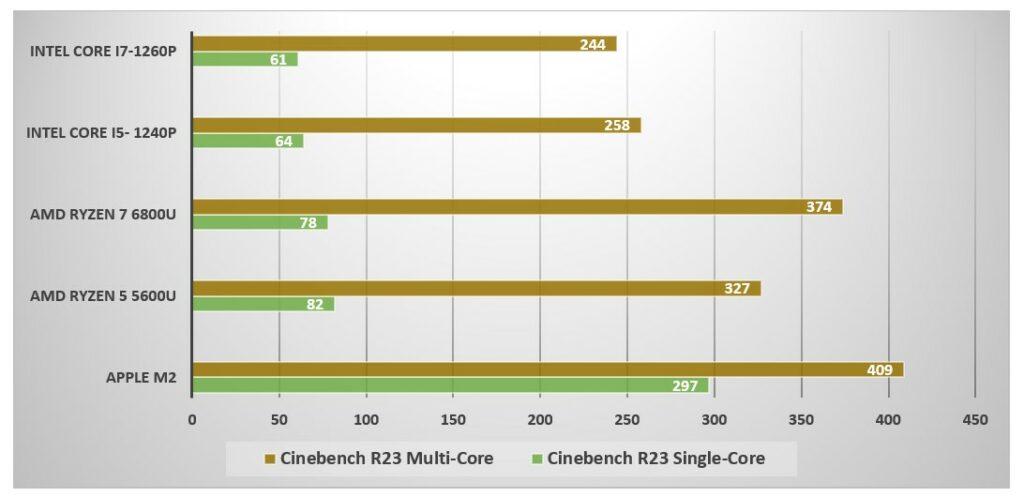
Putting raw performance aside, the M2 also betters both the processor powerhouses with its AI capabilities and built-in graphics. Its neural core, with robust capabilities, executes tasks and manages resources more efficiently. It even pips AMD’s crown jewel, the RDNA 2, in terms of iGPU gaming capabilities. We tested Shadow of the Tomb Raider in 1200p resolution with SMAA enabled, and the M2 outperformed the Ryzen 7 6800U by up to 10 percent.
Conclusion
There are many things to be excited about, isn’t it? We were particularly amazed at the gaming capabilities of the new Apple M2 processor. For a start, the M2 beats the M1 in raw performance, albeit at the cost of efficiency, and the high memory bandwidth is a worthy upgrade for users looking to get the most out of their MacBooks. Then there is the higher memory support and the new media engine with support for 6K displays and ProRes encoding and decoding to spice things up even more. The portable 13-inch MacBook Air started to sell like hotcakes and we can’t wait to see what the M2 Pro and Ultra or even Max would bring.


